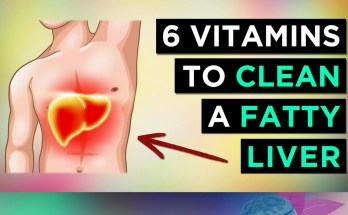When it comes to choosing between butter and margarine, the debate has been ongoing for decades. Both options have their pros and cons, but which one is truly better for your health? This article dives deep into the nutritional profiles, health impacts, and expert recommendations to help you make an informed decision.
Understanding Butter: The Traditional Choice
Butter is a natural product made by churning cream or milk to separate the fat from the buttermilk. It has been a staple in kitchens worldwide for centuries, prized for its rich flavor and versatility in cooking and baking.
Pros of Butter
- Natural Ingredients: Butter is made from simple ingredients—cream and sometimes salt—making it a minimally processed food.
- Rich in Nutrients: Butter contains beneficial nutrients like vitamin A, which supports vision, immune function, and skin health. It also provides vitamin K2, essential for bone health and calcium absorption.
- Contains Healthy Fats: Butter includes small amounts of conjugated linoleic acid (CLA) and vaccenic acid, which may have heart-protective properties.
Cons of Butter
- High in Saturated Fat: About 63% of butter’s fat content is saturated fat. Consuming too much saturated fat can raise LDL (“bad”) cholesterol levels, increasing the risk of heart disease.
- Calorie-Dense: One tablespoon of butter contains approximately 100 calories, making it easy to overconsume if not used sparingly.
- Cholesterol Content: Butter contains dietary cholesterol, which can contribute to higher blood cholesterol levels in some individuals.
Bottom Line on Butter
Butter can be enjoyed occasionally as part of a balanced diet but should be consumed in moderation due to its high saturated fat and calorie content.
What About Margarine? The Modern Alternative
Margarine was introduced as a plant-based alternative to butter and is typically made from vegetable oils like soybean, canola, or palm oil. Over the years, margarine formulations have evolved significantly.
Pros of Margarine
- Lower in Saturated Fat: Margarine generally contains less saturated fat than butter because it’s made from plant oils.
- No Cholesterol: Unlike butter, margarine is free from dietary cholesterol since it’s plant-based.
- Enriched Options Available: Some margarines are fortified with plant sterols or stanols that help lower LDL cholesterol levels.
- Trans-Fat-Free Options Exist: Many modern margarines are now trans-fat-free due to advancements in production methods.
Cons of Margarine
- Trans Fats in Older Formulations: Stick margarines often underwent partial hydrogenation during production, creating trans fats that are harmful to heart health by raising LDL cholesterol while lowering HDL (“good”) cholesterol.
- Omega-6 Fatty Acids Imbalance: Many margarines contain high levels of omega-6 fatty acids without sufficient omega-3s to balance them out. An excessive omega-6 intake may contribute to inflammation when not balanced with omega-3s.
- Highly Processed Ingredients: Some margarine brands include artificial additives or preservatives that might not appeal to those seeking natural foods.
Bottom Line on Margarine
Soft tub or liquid margarines with no trans fats and low saturated fat are healthier options compared to stick margarine or butter.
Butter vs. Margarine: Key Comparisons
| Feature | Butter | Margarine |
|---|---|---|
| Main Ingredient | Cream (animal-based) | Vegetable oils (plant-based) |
| Saturated Fat | High | Lower (in soft/liquid forms) |
| Trans Fats | None (naturally occurring trace amounts) | Present in older stick versions; absent in newer ones |
| Cholesterol | Contains dietary cholesterol | Cholesterol-free |
| Processing Level | Minimal | Highly processed |
Which Is Healthier? Expert Recommendations
The healthiest choice depends on the type of margarine you select and how much butter you consume:
- If you’re looking for a healthier spread option:
- Opt for soft tub or liquid margarines labeled “trans-fat-free” with less than 3 grams of saturated fat per serving.
- Look for products enriched with plant sterols or stanols if you’re managing high cholesterol levels.
- If you prefer using butter:
- Use it sparingly as a treat rather than an everyday staple.
- Consider pairing it with other heart-healthy foods like whole grains or vegetables to balance your diet.
- For cooking purposes:
- Replace both butter and margarine with healthier alternatives like olive oil or avocado oil whenever possible.
Final Verdict
When weighing the pros and cons of butter versus margarine, there isn’t a one-size-fits-all answer—it largely depends on your personal health goals and preferences:
- For those concerned about heart health or managing high cholesterol levels, soft tub or liquid margarine without trans fats is generally the better choice.
- If you value natural ingredients over processing and consume these fats sparingly within a balanced diet, small amounts of butter can fit into your lifestyle.
Ultimately, moderation is key regardless of which option you choose!
Top 3 Authoritative Sources Used
- Food & Drug Administration (FDA)
The FDA provides guidelines on dietary fats such as saturated fats and trans fats while regulating food labeling standards that help consumers make informed choices about products like butter and margarine. - American Heart Association (AHA)
The AHA offers evidence-based recommendations on reducing cardiovascular risks through dietary changes such as limiting saturated fats while emphasizing unsaturated fats found in certain types of margarine. - United States Dietary Guidelines for Americans (DGA)
Published every five years by federal agencies including USDA & HHS; these guidelines provide science-backed advice on healthy eating patterns including recommendations around fat consumption limits
Here’s If You Love to Read More: 12 Subtle Signs Your Body May Be Hiding Health Issues
Here’s If You Love to Watch Movie: MyFlixerHD





